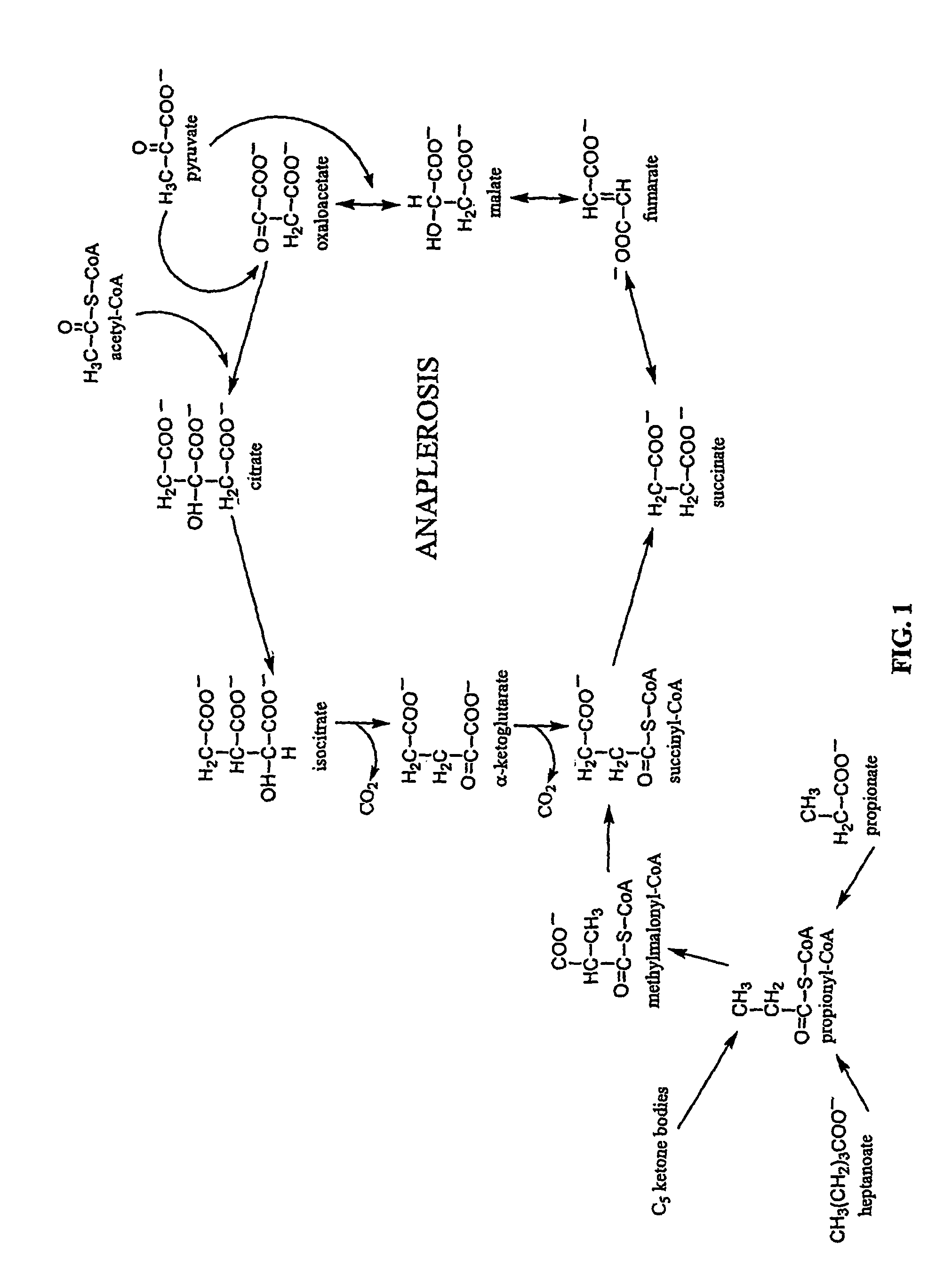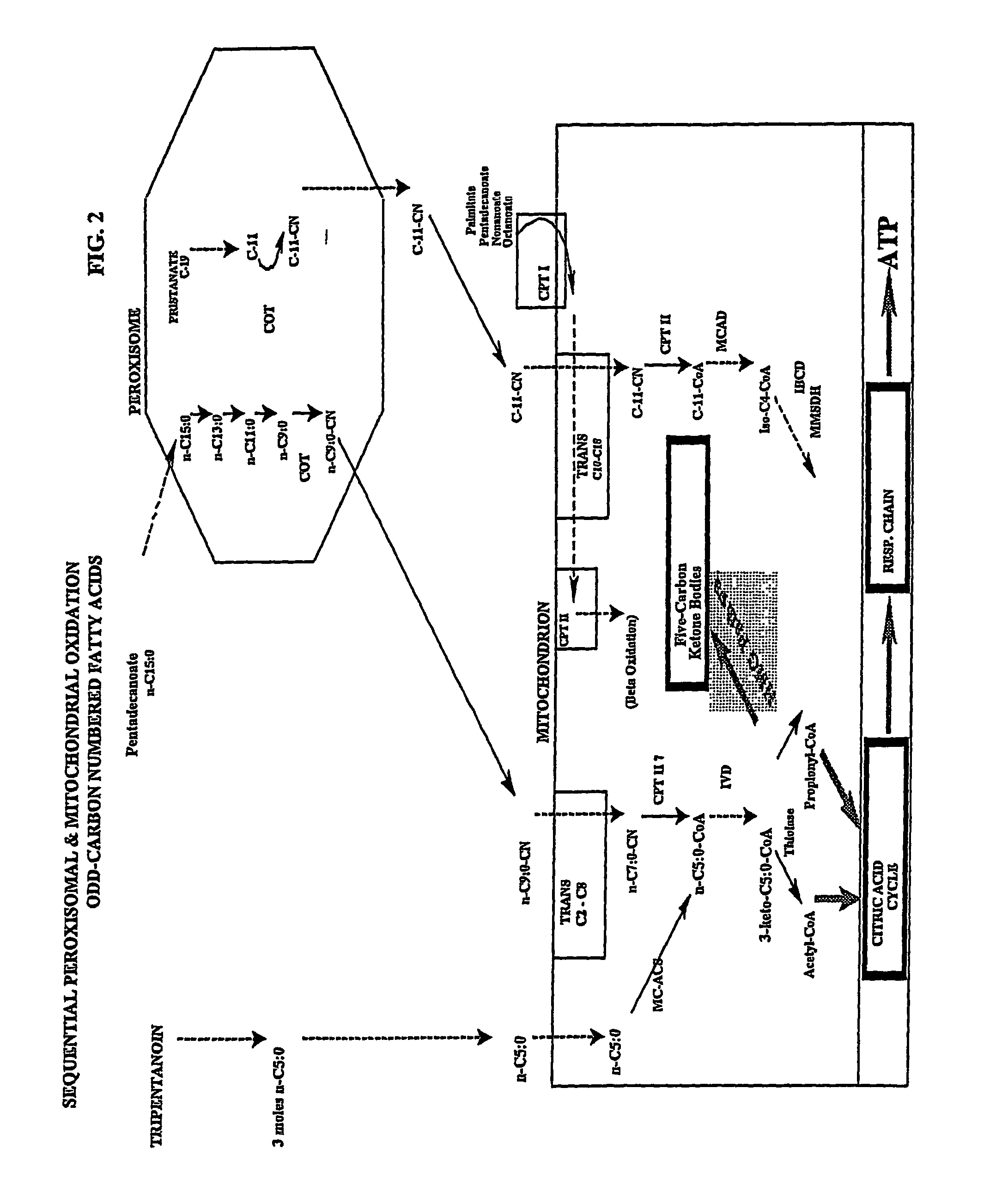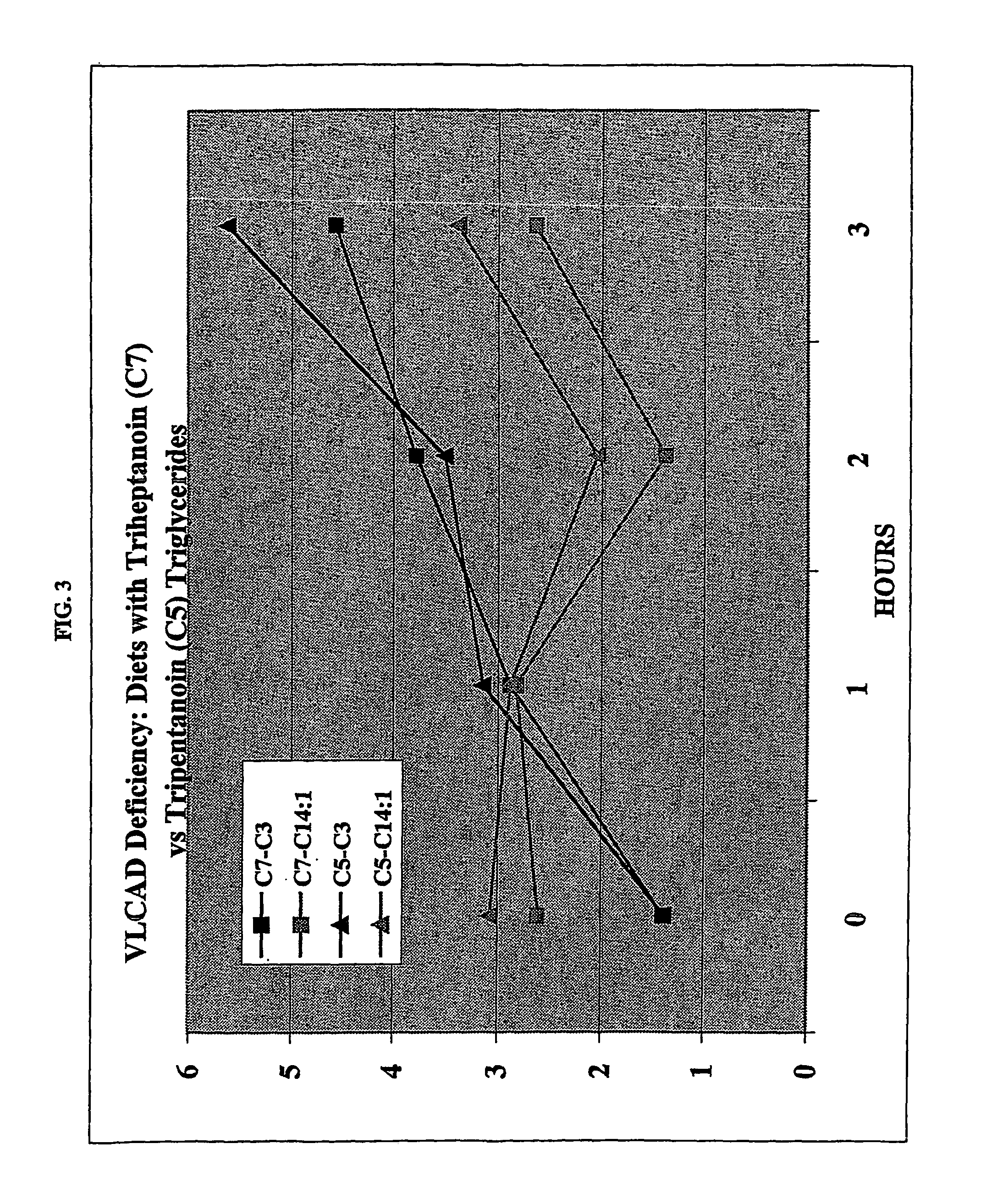Five and fifteen carbon fatty acids for treating metabolic disorders and as nutritional supplements
a technology of mcad and carbon fatty acids, which is applied in the field of nutritional supplements and methods of treating inherited metabolic disorders and acquired metabolic derangements, can solve the problems of serious clinical manifestations or even death, the inability to treat the deficiency of mcad with seven carbon fatty acids, and the inability of normal individuals to experience nutritional inefficiencies, etc., and achieve the effect of increasing metaboli
- Summary
- Abstract
- Description
- Claims
- Application Information
AI Technical Summary
Benefits of technology
Problems solved by technology
Method used
Image
Examples
example 1
Use of Tripentanoin to Treat Patients with Fat Oxidation Disorders (VLCAD and SCAD)
[0036]A VLCAD patient and an SCAD patient, both of whom had gastrostomy sites for enteral administration, each were provided with separate meals containing equimolar amounts of triheptanoin (C7) and tripentanoin (C5) at different times on the same day. Each patient was given the amount in 1 of 4 daily meals equivalent to a diet of 3 gms / Kg / day or about 30% of total Kcal as the triglyceride. Serial blood samples were obtained hourly and individual urines were collected at baseline and during the meal.
[0037]The patient with VLCAD (FIG. 3) was monitored over a 3 hour interval and the SCAD patient was monitored for 4 hours after beginning the meal. There was no clinical or biochemical toxicity associated with these tests. One way the VLCAD patient was monitored was for myristenoylcamitine (cis-5-C14:1), which reflects oxidation of oleate and is therefore an indication of ongoing lipolysis during the meal ...
example 2
Use of C5 Fatty Acid to Treat Patients with MCAD Deficiency
[0042]An infant afflicted with MCAD deficiency would be diagnosed via known screening methods. An infant formula having C5 as the fatty acid source could be fed to the infant, preferably in a manner other than orally due to the disagreeable taste, such as through a feeding tube, to provide a nutrient which will be metabolized into propionyl CoA and acetyl CoA. Oral administration could be employed if a suitable taste-masking agent is available and is employed. Alternatively, the infant could be fed parenterally, such as during periods of illness, with an appropriate parenteral nutrition formula supplemented with C5 fatty acid.
example 3
Use of C15 Fatty Acid in a Nutritional Supplement
[0043]A milkshake or smoothie could be formulated with C15 as a fatty acid source or supplement. A person could drink the smoothie and obtain the benefit of a substance that will be metabolized into acetyl CoA as well as propionyl CoA, thus providing fuel for the Krebs cycle from more than one entry point. This could enhance performance of an athlete.
PUM
| Property | Measurement | Unit |
|---|---|---|
| time | aaaaa | aaaaa |
| fatty acid disorder | aaaaa | aaaaa |
| fatty acid | aaaaa | aaaaa |
Abstract
Description
Claims
Application Information
 Login to View More
Login to View More - R&D
- Intellectual Property
- Life Sciences
- Materials
- Tech Scout
- Unparalleled Data Quality
- Higher Quality Content
- 60% Fewer Hallucinations
Browse by: Latest US Patents, China's latest patents, Technical Efficacy Thesaurus, Application Domain, Technology Topic, Popular Technical Reports.
© 2025 PatSnap. All rights reserved.Legal|Privacy policy|Modern Slavery Act Transparency Statement|Sitemap|About US| Contact US: help@patsnap.com



